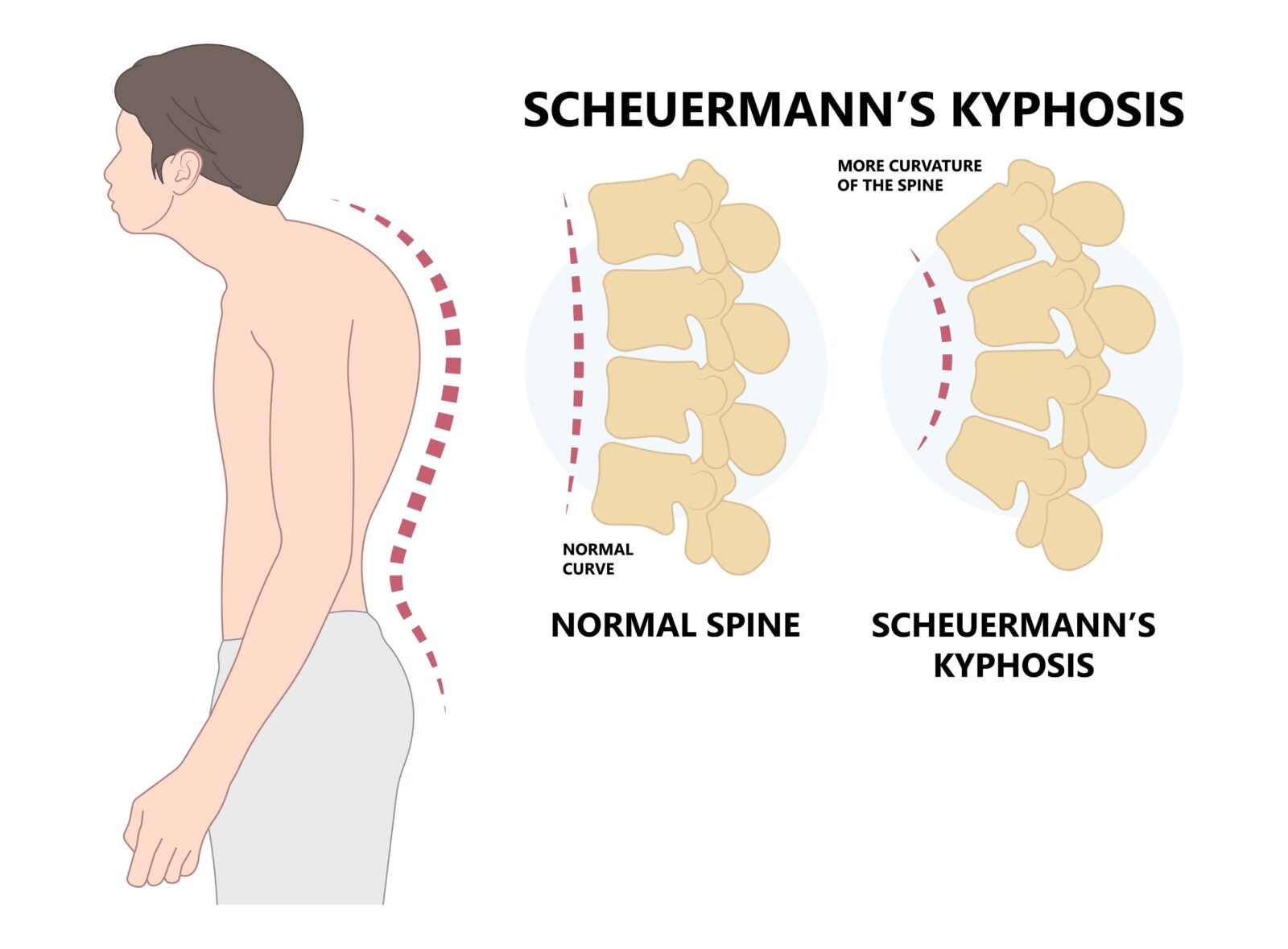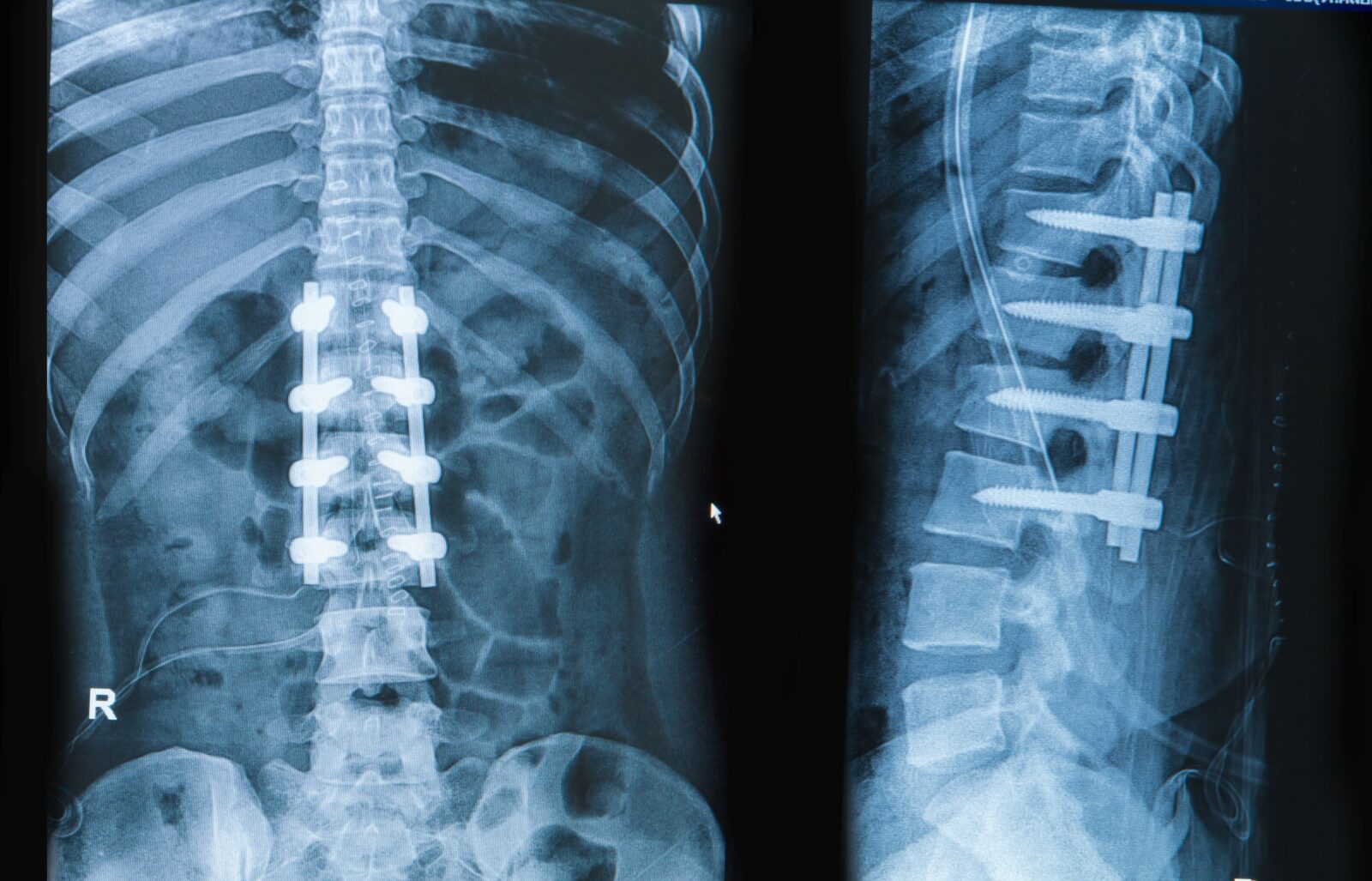Back pain is a common ailment affecting millions worldwide, with numerous potential causes that can make diagnosis and treatment a complex process. Among these conditions is Scheuermann’s disease, a relatively lesser-known cause of back pain, particularly in adolescents and young adults. This guide aims to demystify Scheuermann’s disease, offering insight into its definition, causes, symptoms, diagnosis, and treatment options.
Understanding Scheuermann’s Disease
Scheuermann’s disease (also known as Scheuermann’s kyphosis, Calve disease, or juevenile osteochrondrosis) is a developmental disorder that affects the spine, leading to a pronounced and abnormal forward curvature (kyphosis) of the upper back. This condition typically manifests during the growth spurt before puberty, making early detection and management crucial for those affected. Understanding the development of Scheuermann’s disease involves a closer look at the unique anatomy of the upper spine and the changes that occur in this condition.
The Anatomy of the Upper Spine
The spine is divided into several regions: cervical (neck), thoracic (upper back), lumbar (lower back), sacral, and coccygeal (tailbone). Scheuermann’s disease primarily affects the thoracic region, though it can also influence the thoracolumbar area where the thoracic and lumbar regions meet.
The spine’s structural integrity and function depend on the vertebrae (the individual bones that make up the spine), intervertebral discs (which act as cushions between the vertebrae), ligaments, and muscles that support and allow for movement. Each vertebra is roughly cylindrical in shape and stacks neatly one on top of another, forming the spinal column.
Development of Scheuermann’s Disease
In Scheuermann’s disease, the normal growth pattern of the vertebrae is disrupted. Instead of growing evenly, the anterior (front) part of the vertebra grows slower than the posterior (back) part. This uneven growth causes the vertebrae to become wedge-shaped rather than rectangular. When several adjacent vertebrae develop this wedge shape, it exaggerates the natural kyphotic curve of the upper spine, leading to the characteristic hunched back appearance associated with this condition.
The precise cause of this disrupted growth pattern is not fully understood, but it is believed to involve a combination of genetic and environmental factors. The disease tends to run in families, suggesting a hereditary component. Mechanical factors, such as activities that put excessive stress on the spine during its critical growth periods, may also play a role.
How Scheuermann’s Disease Affects the Spine

The wedge-shaped vertebrae characteristic of Scheuermann’s disease result in a fixed spinal curvature that cannot be corrected simply by posture adjustments. This differs from postural kyphosis, which can be improved with posture correction. In Scheuermann’s disease, the curvature is structural, meaning it is due to changes in the bone structure itself.
The abnormal curvature can lead to stiffness and pain in the affected region. Over time, the excessive curvature can strain the muscles and ligaments in the back, leading to discomfort and limiting physical activity. In severe cases, the curvature can compress the chest cavity, potentially affecting lung and heart function, although such complications are rare.
The unique anatomy of the upper spine, with its natural kyphotic curve, is crucial in maintaining the body’s center of gravity and allowing for an upright posture. However, in Scheuermann’s disease, this balance is disrupted, leading to the characteristic symptoms and challenges associated with the condition. Understanding this anatomical and developmental context is essential for diagnosing and treating Scheuermann’s disease effectively.
Symptoms to Watch For
Scheuermann’s disease symptoms can vary but typically include:
- A visible hump on the upper back
- Back pain, which can range from mild to severe
- Stiffness in the affected area
- Tightness in the hamstrings
- Difficulty in maintaining proper posture
- In more severe cases, the curvature can compress internal organs, leading to respiratory or cardiac issues, though such complications are rare.
Diagnosing and Treating Scheuermann’s Disease
Diagnosis involves a thorough physical examination, patient history, and imaging tests such as X-rays. X-rays can reveal the characteristic wedge-shaped vertebrae and the degree of kyphosis, crucial for confirming the diagnosis. MRI scans may also be recommended to assess the spinal cord and surrounding structures, especially if nerve involvement is suspected.
Treatment for Scheuermann’s disease is tailored to the individual, depending on the severity of the curvature, the presence of symptoms such as pain, and whether the patient’s bones are still growing. Spinal specialists, including orthopedic surgeons and physical therapists, typically use a combination of non-surgical and surgical approaches to manage the condition.
Non-Surgical Treatments
Non-surgical treatments are the first line of approach for Scheuermann’s disease, especially in cases where the curvature is mild to moderate and the symptoms are manageable. These include:
- Physical Therapy: A cornerstone of treatment, physical therapy aims to strengthen the muscles around the spine, improving posture and flexibility. Exercises tailored to the patient can help relieve pain and reduce the risk of the curvature worsening over time.
- Bracing: For adolescents whose bones are still growing, wearing a brace can be effective in halting the progression of the curve. The brace is typically worn until the bones stop growing and must be used as prescribed to be effective. Bracing is not usually recommended for adults, as it does not correct curvature in skeletally mature individuals.
- Pain Management: Over-the-counter pain relievers such as ibuprofen or naproxen can help manage pain. In some cases, prescription medications may be necessary. Physical therapy techniques, including heat, ice, and electrical stimulation, may also be used for pain relief.
- Observation: In cases where the curvature is mild and not progressing, regular check-ups with a spinal specialist may be all that’s needed. These appointments often involve monitoring the spine’s curvature and any symptoms that may arise.
Surgical Treatments

Surgery may be considered for severe cases of Scheuermann’s disease, especially when non-surgical treatments fail to relieve pain or when the spinal curvature is severe (usually over 75 degrees) and causes functional limitations or significant cosmetic concerns. The most common surgical procedure is spinal fusion, which involves:
- Correcting the Curve: Surgeons aim to reduce the degree of kyphosis by realigning the vertebrae to a more normal curvature.
- Fusing the Vertebrae: The corrected vertebrae are then fused together using bone grafts, rods, screws, or cages to maintain the new alignment. Over time, the vertebrae heal into a single, solid bone.
While surgery does carry risks, advances in surgical techniques have improved the safety and effectiveness of these procedures. Post-surgery, patients typically undergo a period of rehabilitation that includes physical therapy to strengthen the back and learn new postures.
Conclusion
Scheuermann’s disease, while a distinct cause of back pain, especially in young individuals, can be effectively managed with the right approach. Understanding the condition, its symptoms, and treatment options empowers patients to take an active role in their care, leading to better health outcomes. If you’re experiencing back pain and suspect it may be related to Scheuermann’s disease, consult with a healthcare provider for a comprehensive evaluation and personalized treatment plan.










